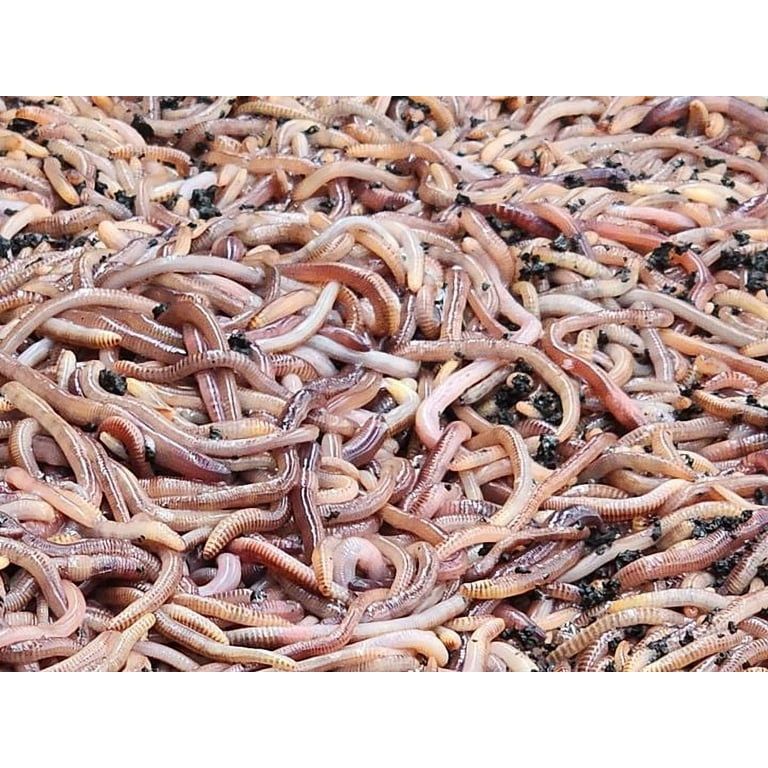Trusted red worms: For natural soil care
Trusted red worms: For natural soil care
Blog Article
Red Wigglers: The Secret to Eco-Friendly Composting
Red wigglers, scientifically recognized as Eisenia fetida, play a pivotal function in lasting composting techniques, using a natural service to throw away monitoring. red wigglers. These worms not only take in organic materials yet likewise transform them right into valuable vermicompost, enhancing dirt health and wellness and promoting eco-friendly balance.
What Are Red Wigglers?
Although many individuals know with earthworms, red wigglers (Eisenia fetida) are a certain types that play a critical function in composting. Belonging to Europe, they have actually adjusted well to a range of settings, specifically in disintegrating raw material. Unlike typical yard worms, red wigglers flourish in rich, damp atmospheres, making them optimal for composting systems.
(red worms near me)These worms are characterized by their reddish-brown pigmentation and lengthened bodies, normally gauging between 3 to 4 inches in length. Red wigglers are epigeic worms, suggesting they reside near the dirt surface area and feed on rotting natural product. Their high reproductive rate permits populations to proliferate under ideal problems, with the capacity to double in number every couple of months.
Red wigglers have a distinct digestion system that allows them to break down natural waste successfully. As they consume food scraps, they produce nutrient-rich castings, which work as a superb fertilizer for plants. This varieties is not only efficient in transforming waste however also adds to soil health, advertising microbial activity and boosting dirt structure. Their lasting nature makes red wigglers a beneficial property in environmentally friendly composting methods.
Advantages of Making Use Of Red Wigglers
Using red wigglers in composting systems uses countless benefits that boost both the effectiveness of waste disintegration and the top quality of the resulting garden compost. These earthworms, clinically recognized as Eisenia fetida, are renowned for their outstanding capacity to take in organic waste, transforming it into nutrient-rich vermicompost at an impressive price. Their fast digestion process speeds up the malfunction of kitchen scraps and yard waste, considerably lowering the moment needed for composting.
Along with their performance, red wigglers add to enhanced dirt structure and fertility. The vermicast created by red wigglers is abundant in vital nutrients, valuable bacteria, and humic acids, every one of which boost soil health and wellness and advertise plant development. This nutrient-dense compost aids maintain dampness and boosts oygenation in the soil, cultivating a flourishing community for plants.
Additionally, utilizing red wigglers for composting decreases garbage dump waste, adding to a much more sustainable waste management system. By diverting natural products from land fills, composting with red wigglers decreases greenhouse gas exhausts, making it an environment-friendly selection for eco mindful individuals and communities. Overall, red wigglers give a reliable and lasting option for composting.
Establishing Up Your Worm Bin
Creating a worm bin is a straightforward procedure that needs mindful look at here consideration of products and conditions to make sure a growing setting for red wigglers. Begin by selecting an ideal container, which can be a plastic bin or wood box, with a capacity of a minimum of 10 gallons for effective composting. Guarantee the bin has adequate ventilation by piercing tiny holes in the lid and sides to permit air flow.
Next, prepare the bedding, which is important for keeping wetness and supplying an environment for the worms. Suitable materials include shredded newspaper, cardboard, coconut coir, or peat moss. Objective for a bed linens deepness of around 4-6 inches, guaranteeing it is moist but not excessively wet.
It is essential to maintain the best temperature for your worm bin, preferably between 55 ° F and 77 ° F(13 ° C and 25 ° C) Position the bin in a shaded location to avoid overheating. Additionally, keep the bin far from direct sunlight and extreme weather to safeguard the worms.
Feeding Your Red Wigglers
Feeding your red wigglers is a critical aspect of successful worm composting, as it straight impacts their wellness and the performance of your composting system - red wigglers. Red wigglers thrive on a well-balanced diet being composed mostly of organic waste materials.
(red wigglers for sale near me)Begin with small amounts to enable the worms to eat the product completely before including a lot more. Screen the food decomposition process and change the amount based on exactly how rapidly the worms are processing the waste.

Keeping Your Worm Compost System
A well-maintained worm compost system is essential for making best use of the performance and longevity of your composting efforts. Normal tracking of moisture degrees is critical, as red wigglers grow in a damp setting, ideally around 70% moisture. If the bed linen ends up being as well dry, lightly mist it with water; alternatively, if it becomes overly damp, add completely dry bed linens such as shredded paper or cardboard to soak up excess dampness.
Temperature control is likewise vital. Red wigglers favor temperature levels between 55 ° F and 77 ° F(13 ° C to 25 ° C) If temperatures go beyond 85 ° F(29 ° C), the worms may come to be stressed or pass away. Ensure your compost system is maintained in a shaded, aerated location to avoid overheating.
Furthermore, look for any kind of unpleasant odors, which might indicate an imbalance in the system. Routinely aerating the compost by delicately turning it will help maintain appropriate air flow and stop anaerobic conditions. Lastly, monitor the worm population and their activity; a prospering populace shows a well-balanced atmosphere. By adhering to these maintenance methods, you can make sure a productive and sustainable worm composting system that effectively recycles natural waste.

Verdict
In final thought, red wigglers play an important function in green composting by successfully converting natural waste right into important vermicompost. Welcoming the usage of red wigglers stands for a practical strategy to boosting environmental sustainability and fostering much healthier ecosystems.
Report this page